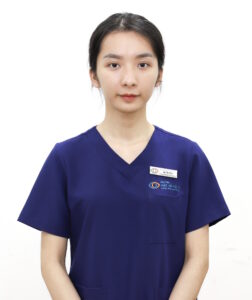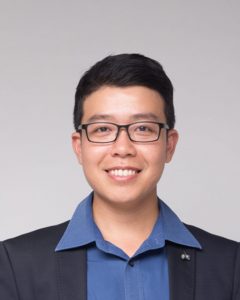August 1, 2023
By Tho Do, BOptom, and Huy Tran, MD, PhD
 The prevalence of myopia is estimated to affect half of the world’s population by 2050. Recent evidence supports that the development and progression of myopia result from a multifactorial interplay. According to recent reports, the average annual progression of myopia in Europe and Eastern Asia ranged from -0.55D to -0.82D. This study aimed to investigate the annual progression of myopia and its relationship with myopigenic factors in Indian children with myopia.
The prevalence of myopia is estimated to affect half of the world’s population by 2050. Recent evidence supports that the development and progression of myopia result from a multifactorial interplay. According to recent reports, the average annual progression of myopia in Europe and Eastern Asia ranged from -0.55D to -0.82D. This study aimed to investigate the annual progression of myopia and its relationship with myopigenic factors in Indian children with myopia.
In this retrospective study, data from six age groups spanning five-year intervals were analyzed to investigate 6,984 myopes who met the inclusion criteria from a pool of 90,101 myopic individuals. The refractive error was assessed and monitored on a minimum of two occasions within four groups: mild, moderate, high, and severe myopia. The age-specific myopia progression was determined using the cut-off point at 15 years old.
The overall mean myopia progression ranged from -0.07 ± 0.02D (standard error) to -0.51 ± 0.02D between the age groups. There was a strong correlation between the mean annual progression of refractive error with age and the severity of myopia. The greatest change in refractive error was found in individuals between 6 and 10 years old. The mean annual progression was significantly worse for the age group ≤ 15 years compared to the group older than 15 years. Moreover, early onset of myopia was associated with the development of high myopia in adulthood.
The main findings from this study support the need for regular follow-ups, axial-length monitoring, and the application of myopia control treatment strategies regardless of the age and the severity of myopia.
Abstract
Myopia Progression Varies with Age and Severity of Myopia
Pavan Kumar Verkicharla, Priyanka Kammari, Anthony Vipin Das
Objective: To investigate annual myopia progression in individuals from South Indian states across different age groups and its association with age of onset and severity of myopia.
Methods: This retrospective study included the data of 6,984 myopes (range: 1–30 years) who visited at least twice to LV Prasad Eye Institute and on whom a standard retinoscopy technique was performed to determine refractive error. Based on spherical equivalent (SE) refractive error, individuals were classified into mild, moderate, high, and severe myopic groups. Myopia progression was calculated as a difference between SE at one-year follow-up visit and baseline. To determine the age-specific myopia progression, individuals were further categorized as myopes who are at least 15 years or younger and those who are above 15.
Results: The mean annual progression of myopia was influenced by both the age group (p < 0.001) and severity type of myopia (p < 0.001). The overall mean myopia progression ranged from -0.07 ± 0.02 D (standard error) to -0.51 ± 0.02 D across different age groups with maximum change in refractive error noted in children aged 6–10 years and the least in adults aged 26–30 years. Myopia progression was greater in severe myopes, followed by high, moderate, mild myopes, and in individuals aged ≤ 15 years compared to those aged >15 years (-0.45 ± 0.01 vs. 0.14 ± 0.01, p < 0.001). Severe myopes alone had similar annual myopia progression rate irrespective of age (i.e., ≤15 and >15 years, p = 0.71). Early onset of myopia was associated with high myopia in adulthood.
Conclusion: The magnitude of myopia progression in children from South Indian states is comparable to that of Caucasians and Chinese. The greater progression in “severe myopes” across different age groups emphasizes the need for regular follow-ups, monitoring axial lengths, and anti-myopia strategies to control myopia progression irrespective of the age and degree of myopia.
Verkicharla, P. K., Kammari, P., & Das, A. V. (2020). Myopia progression varies with age and severity of myopia. Plos one, 15(11), e0241759.
DOI: https://doi.org/10.1371/journal.pone.0241759
 |
Tho Do, BOptom, is an optometrist at the Myopia Control Department of Hanoi Eye Hospital 2, working on myopia-related research projects and on developing the myopia program in Hanoi, Vietnam. |
 |
Huy Tran, MD, PhD, is the Head of the Myopia Control Clinic at Hai Yen Eye Care and a lecturer of the University of Medicine and Pharmacy at Ho Chi Minh City, Vietnam. He also collaborates with BHVI on myopia-related projects. |













